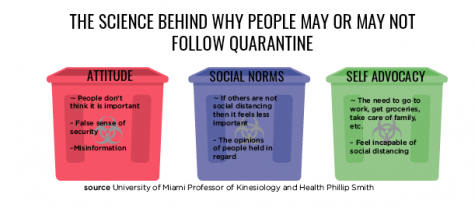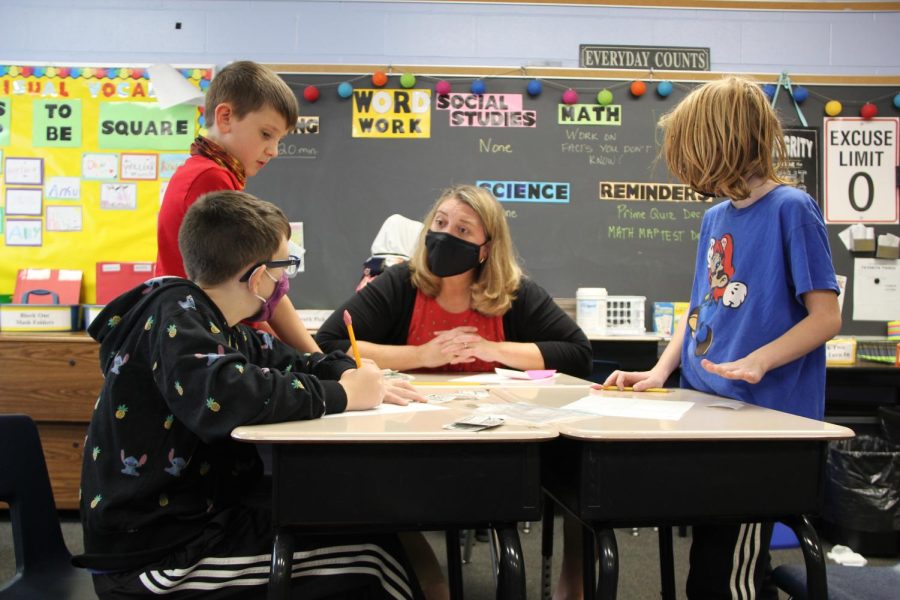story by Anna Mullins | infographics Alexandra Fernholz and Anna Mullins | photography fair use
In late January 2020, an East senior traveled to Shanghai. Chinese New Year was just around the corner, and he had family there. They didn’t know that there was a possibility that they would not be able to leave.
When Ben Lowry’s family heard about the coronavirus, it was not yet in the Pudong district in China, so they were not worried about getting it. But soon after that, the U.S. planned to cancel all flights from China on Feb. 5, 2020. On Feb. 4, at 4 a.m. Eastern Time, Lowry and his family had to book a flight and come back to America before borders closed.
“In the specific district [Pudong] that I was in, there weren’t any known cases,” Lowry told Spark. “So it wasn’t a huge concern while we were over there. But as soon as we heard that it started getting pretty bad, that’s when we heard that the U.S. wasn’t going to be doing any more flights. That’s when we started worrying about it.”
Despite the fact that there were no known cases in the Shanghai district in January, many people were still taking precautions. According to Lowry, while he was in the city, in supermarkets everyone wore masks and usually only had interaction with the cashier. Most people, though, were staying inside and away from usually densely populated areas.

“There’s a huge core spot, this huge shopping district we saw pictures [of], and it was like the streets had been deserted,” Lowry says. “Everybody had basically bunkered down. It was completely devoid of people. I was talking to family in the area, and they were saying that this has never happened [before]. It’s a huge city, like 26 million people, and they’ve never seen anything like this.”
Separation during a pandemic is very important to stop the spread of the virus. According to Philip Smith, Assistant Professor in the Department of Kinesiology and Health at Miami University, if everyone was frozen in place at least six feet apart from each other for two weeks, the virus would be completely eradicated.
“In terms of the difference, the estimate is that for every one person who gets influenza, they’ll get about one other person sick,” Smith told Spark. “And for every one person that gets [COVID-19], estimates vary, but the most consistent estimate is that they will get around two people sick. That number is going to change depending on how old the population is and how close people are to each other.”
According to Smith, it is important for communities to make it clear that everyone is in this together and staying home. The best thing for people to do is social distance and to not congregate, but people can still stay connected.
“It’s been so great to see so many people volunteering to help other people who are having a hard time with social distancing,” Smith says. “[They have been] supporting social distancing on social media and also trying to connect with people. You see on the news people doing these wonderful things to help people stay connected and uplift spirits and keep mental health and all that during the pandemic.”

Communities are continuing to communicate with people about what is happening. According to Director of Lakota School/Community Relations Betsy Fuller, Lakota has been using email, social media, and their website to reach out to families and community members about the district’s response to the COVID-19 crisis. Superintendent Matt Miller has also begun sharing short video updates.
“As the number of cases of COVID-19 was increasing, we communicated with our families the steps we were taking to monitor the situation,” Miller told Spark. “This included working with the Butler County Health Department and monitoring information reported by the CDC. This was shared with families on our website and through our district newsletter.”
When the concerns surrounding COVID-19 first began to surface, Lakota administration began planning a remote learning exercise that would take place on March 13. According to Miller, the district wanted to find out how to transfer students and teachers to remote learning from a regular classroom setting.
read more on Lakota’s remote learning here
“When we decided to plan a remote learning exercise, our first step was to determine how to best educate all of our students remotely,” Miller says. “This would not only test our systems, but give our teachers the time to collaborate with their teams about how to continue teaching our students, should we need to close. Ultimately, this planned exercise worked in our favor, as Ohio Gov. Mike DeWine ordered Ohio schools to close.”
The Lakota Health Services and Communications departments partnered to create a health services website. It includes information from the CDC and the Ohio Department of Health, as well as information that is more focused on the district.
“Together with our Communications department we reviewed resources that were published from reputable sources,” Lakota Manager of Health Services Lauren Brown told Spark. “We also included resources shared by members of the Lakota nursing staff. With so much general information being put out on [other] websites, we wanted ours to be specific to our schools and community.”
Another concern for members of the community was students who rely on free and reduced lunch. The district made accommodations for these students as well as making resources, such as counselors, available to all students.
“Our child nutrition department is providing breakfast and lunch for our students at 11 locations throughout our communities,” Miller says. “Our technology department has done an outstanding job ensuring that digital equity is met for our families. Additionally, we know that this is a difficult time for our families and students. Our counselors and mental health therapists continue to work with our students.”
read more about Lakota’s food distribution during the pandemic here
To make Lakota buildings safe for all students in case of impending re-access to the buildings, schools were disinfected. As of April 20, DeWine declared that all schools would be closed for the rest of the year, but maintenance and facilities teams will continue to do building checks.
“All the schools were cleaned and disinfected during spring break and the week following spring break by custodians,” Lakota Chief Operations Officer Chris Passarge told Spark. “Buildings are closed, with the exception of those being used to support food distribution. These buildings have the space clean and sanitized after each use. Our maintenance and facilities team is on a rotation to do building checks while [Lakota is] closed to the public.”
Lakota has put forth efforts to make sure that all students are kept safe and that all facilities are maintained. Because of the pandemic, many senior activities have been canceled, leading to an unprecedented senior year for the class of 2020.
“It’s pretty easy for the last few months as a senior before we leave high school, but the whole college stuff is also hard to think about, because we don’t even know if remote learning will be over by the time we are going to college in August,” Lowry says. “The last day that we see our high school friends in that sort of environment was the Thursday before spring break, which kind of blew me crazy.”








































































































